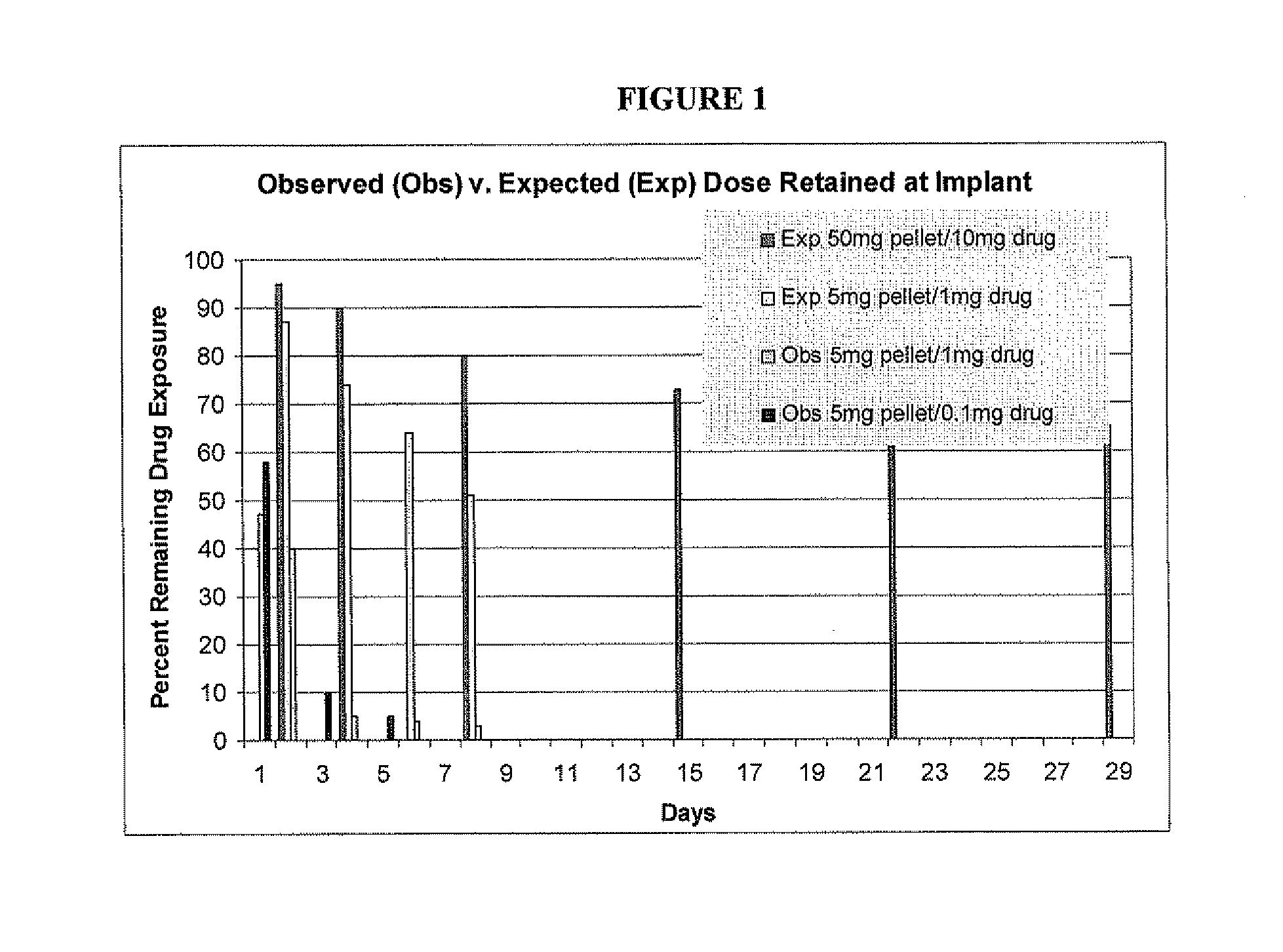Rapid release mini-tablets provide analgesia in laboratory animals
a technology of laboratory animals and mini-tablets, which is applied in the direction of drug compositions, biocide, heterocyclic compound active ingredients, etc., can solve the problems of significant problems, high cost, and time-consuming, and achieve the effects of no detectable effect on mouse behavior, safe and easy use, and no time-consuming, high-risk, and high-risk needs to inject mice post-operation
- Summary
- Abstract
- Description
- Claims
- Application Information
AI Technical Summary
Benefits of technology
Problems solved by technology
Method used
Image
Examples
Embodiment Construction
I. Formulations
[0017]A. Analgesic
[0018]Any of the opioids such as buprenorphine and butorphanol, or drugs such as fentanyl can be used. Representative local anesthestics include bupivacaine, ropivacaine, dibucaine, procaine, chloroprocaine, prilocalne, mepivacaine, etidocaine, tetracaine, lidocaine, and xylocalne, and mixtures thereof can also be used, alone or in combination with other analgesics.
[0019]In the preferred embodiment, buprenorphine is recommended for moderate to severe acute pain in mice and rats. The recommended dose in mice ranges from 0.05-2.0 mg / kg, SC q6-12 hrs (Flecknell, 2000), (Gades, Danneman et al., 2000). Recent studies have shown that the drug has a broad analgesic profile in a wide range of rodent models of acute and chronic pain [Christoph et al, Eur J Pharmacol 507: 87-98; 2005]. The mechanism of action has been studied in mice (Kogel, et al. Eur. J Pain, 9: 599-611, 2005; Ozdogan et al, Eur J. Pharmacol. 529:105-113; 2006). However, as with most studies...
PUM
 Login to View More
Login to View More Abstract
Description
Claims
Application Information
 Login to View More
Login to View More - R&D
- Intellectual Property
- Life Sciences
- Materials
- Tech Scout
- Unparalleled Data Quality
- Higher Quality Content
- 60% Fewer Hallucinations
Browse by: Latest US Patents, China's latest patents, Technical Efficacy Thesaurus, Application Domain, Technology Topic, Popular Technical Reports.
© 2025 PatSnap. All rights reserved.Legal|Privacy policy|Modern Slavery Act Transparency Statement|Sitemap|About US| Contact US: help@patsnap.com

